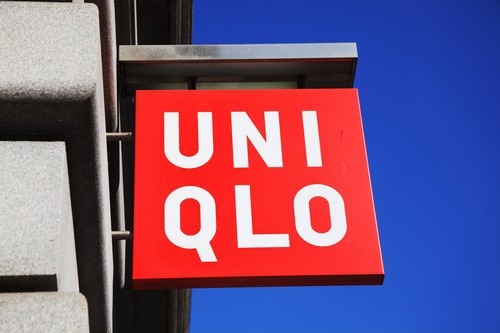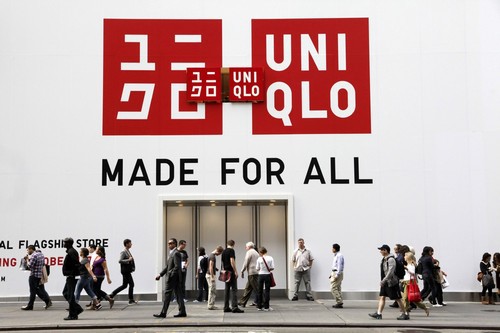The Marketing mix of Uniqlo analyses the 4Ps of Uniqlo, including the Product, Price, Place, and Promotions. Uniqlo is a wholly owned subsidiary of its parent company, Fast Retailing Ltd. It is associated with the Retail and lifestyle industry as it deals in apparel. The company was founded in 1949 and is of Japanese origin. Uniqlo has positioned itself as a desirable and stylish brand that offers innovative and trendy products while maintaining a perfect balance between price and quality. The clothing line is made from the most straightforward designs that blend Japanese values with quality and simplicity. It faces competition from several companies like.
- Tesco
- Walmart
- Zara
- Topshop
- H &M
About Uniqlo
- Type: Fast fashion retailer
- Industry: Apparel
- Founded: 1984
- Founders: Tadashi Yanai
- Headquarters: Tokyo, Japan
- Area served: Worldwide
- Current CEO: Tadashi Yanai
- Number of employees: Over 100,000
- Major products: Casual wear, outerwear, basics, denim, and other apparel
Table of Contents
Uniqlo Product Strategy
Uniqlo is an international brand manufacturer, designer, and stylish and casual apparel retailer. It has a broad range of designer fabrics as well as essential products. Uniqlo believes in creating the best in terms of fit, longevity, and fabrics.
Its clothing line is accessible to all, and it is striving to bring more warmth, better designs, affordable prices, constant innovation, and better quality to appeal to one and all. It targets men, women, and kids as its target customers and has a wide range of apparel, keeping them in mind.
Uniqlo has a diverse product mix that caters to a wide range of customers.
The new Product Mix of Uniqlo in 2023 is as follows (Source).
- Men’s Clothing: Uniqlo’s product range focuses on various items such as t-shirts, jeans, trousers, shirts, sweaters, and blazers. They are known for their basic yet stylish designs for casual and semi-formal occasions.
- Women’s Clothing: The women’s line features dresses, skirts, blouses, t-shirts, jeans, and leggings. Uniqlo also offers a range of maternity wear, catering to the needs of expectant mothers.
- Children’s Clothing: Uniqlo’s range covers apparel for babies, toddlers, and older kids. This includes practical, durable, and comfortable clothing like t-shirts, shorts, pants, and outerwear.
- Outerwear: A significant part of Uniqlo’s product mix is its outerwear collection, which includes jackets, coats, and parkas for men, women, and children. The brand is mainly known for its lightweight down jackets and innovative HEATTECH technology garments.
- Undergarments and Basics: Uniqlo offers a wide range of undergarments for men and women, including underwear, bras, and socks. Their AIRism line is trendy for its breathable, moisture-wicking fabric.
- Accessories: The brand also carries hats, gloves, scarves, and belts. These items often complement their clothing lines in style and color palette.
- Footwear: Uniqlo’s footwear options include shoes and slippers for casual wear, though more limited than its clothing lines.
- Collaborations and Special Collections: Uniqlo frequently collaborates with designers, artists, and other brands to create unique collections. These often include limited-edition items that add unique and diverse options to their product mix.
Uniqlo’s product mix is characterized by its focus on simplicity, quality, and functionality. The brand emphasizes essential items and clothes that are versatile and practical, appealing to a broad range of customers looking for affordable and stylish everyday wear.
Uniqlo Place Strategy
Uniqlo started its operations from Ube in Yamaguchi and, with time, spread its operations to several parts of the world. Its headquarters base is at Midtown Tower in Tokyo. By 1994, the company had more than one hundred outlets in Japan.
In November 1998, the first trendy Uniqlo outlet opened in the Harajuku district and later in several vital cities throughout Japan, making it five hundred stores. After deciding to expand its horizons in the overseas market, Uniqlo separated itself from its parent company and established another enterprise, Fast Retailing Apparel Co.
It started its operations in China and in 2002 opened its outlet in Shanghai in China, along with four other stores in London, England, outside China. The year 2005 saw outlets in the United States, South Korea, Bangladesh, Canada, Germany, France, Singapore, and Taiwan.
By the end of August 2017, the company declared it was operating through thousand nine hundred and twenty Uniqlo outlets in the global market. The company has chosen central and prominent locations for its flagship outlets that well-trained employees maintain. Uniqlo has a highly developed R&D department that keeps an expert eye on all its products and units.
Here’s the place strategy of Uniqlo.
- Global Retail Store Network: Uniqlo has an extensive global presence, with retail stores strategically located in major cities and shopping districts worldwide. These stores are typically in high-traffic areas, making the brand easily accessible to a broad customer base.
- E-Commerce Platform: Uniqlo has invested significantly in its online presence, offering an e-commerce platform allowing customers to shop online from their homes. This digital strategy caters to the growing trend of online shopping and reaches a broader, tech-savvy audience.
- Localized Market Adaptation: While maintaining a consistent global brand image, Uniqlo adapts its stores and product offerings to suit local tastes and preferences. This localization strategy helps the brand resonate with diverse markets and meet customers’ specific needs in different regions.
- Flagship and Concept Stores: Uniqlo operates flagship stores in key cities, which serve as brand showpieces, offering a full range of products and a premium shopping experience. These large-scale stores also function as testbeds for innovative retail concepts and technologies.
- Strategic Partnerships and Collaborations: Uniqlo partners with local businesses and malls to enhance its market penetration and visibility. Additionally, the brand collaborates with designers and other brands for limited-edition collections, which are often exclusively available in specific locations, adding to the allure and exclusivity of its physical stores.
Uniqlo Pricing Strategy
Uniqlo has the distinction of being one of the leading retail chains in Japan in terms of both sales figures and profits earned. It is a high fashion and unique brand that has targeted upper and upper-middle-class people as its target customers. It offers a variety of styles and good quality products at affordable rates.
The company believes in expansion plans and faces competition from several rival brands. To increase its sales figures, it has adopted a penetration pricing policy. It has kept its product prices at par with the prices of its rival brands. As it offers better quality goods, it has managed to capture the mass consumer market with its reasonable product prices.
To increase its footfall, the company offers its products at discounted rates. This marketing mix has increased sales figures, leading to more significant revenues and high profit margins.
Uniqlo’s pricing strategy reflects its positioning as a provider of high-quality, functional, and accessible apparel. This strategy is carefully designed to align with the brand’s unique value proposition and market positioning. Here’s an expert analysis:
- Value-Based Pricing: At its core, Uniqlo employs a value-based pricing strategy. The brand focuses on offering high-quality, durable clothing at reasonable prices. This approach underscores Uniqlo’s commitment to delivering value for money, ensuring customers feel they are making a worthwhile investment in their wardrobe.
- Cost Leadership: Uniqlo achieves cost leadership through efficient supply chain management and economies of scale. The brand can offer competitive prices by keeping production costs low without compromising quality. This approach is essential for attracting price-conscious consumers who also demand high-quality products.
- Market Penetration Pricing: In new markets, Uniqlo often employs penetration pricing strategies to establish a foothold and attract customers. By setting lower initial prices, the brand gains quick market share, introducing new customers to its product quality and brand ethos.
- Dynamic Pricing: Uniqlo adopts a dynamic pricing model, particularly in its e-commerce platforms. Prices may vary based on demand, seasonality, and inventory levels. This flexibility allows Uniqlo to respond quickly to market changes and consumer trends.
- Psychological Pricing: The brand occasionally employs psychological pricing tactics, like pricing products at just below a round number (e.g., $19.90 instead of $20). This strategy is common in retail, making prices appear more attractive and boosting sales through perceived affordability.
- Promotional Pricing: Uniqlo uses promotional pricing strategies, including sales, discounts, and limited-time offers, especially during seasonal transitions and special events. These promotions are designed to increase footfall in stores and drive traffic to the website, clearing out inventory and maintaining customer interest.
In summary, the critical element of Uniqlo’s pricing strategy is a balanced blend of value-based and cost-leadership approaches, complemented by strategic market penetration and dynamic pricing techniques. This multifaceted approach allows Uniqlo to maintain its brand promise of quality and affordability while competing in the global apparel market.
Uniqlo Promotion Strategy
Uniqlo has adopted an aggressive marketing strategy and policy to increase its brand awareness in its home country and overseas markets. It believes in above-the-line and below-the-line advertising and has utilized every possible marketing tool to its advantage. Its ads are shown via newspapers, magazines, hoardings, leaflets, and television.
Uniqlo realizes the heavy impact of social media platforms and digital media on the consumer mindset. It sends periodic SMS to its customers, informing them about new deals and products. Discounts are also offered as part of the Uniqlo marketing mix-up process. The brand provides weekly promos to its regular customers. It has divided them into genders to make them more attractive, like the coupons for boys’, girls’, girls’, and women’s promotions. It has a website and Facebook, YouTube, and Twitter accounts to garner brand visibility.
A contract was signed for design consultancy with Jil Sander, a famous fashion designer, in March 2009. His collection +J won the Brit Insurance Design Fashion Award in 2011. Shaitzy Chen produced a capsule collection in 2010 after being associated with Uniqlo. The company tagline Driven by Innovation is apt as it suits its principles of continuous evolution to create better and better products.
Some Recent Video ads and Print ads for Uniqlo are:
Liked this post? Check out the complete series on Marketing Mix

